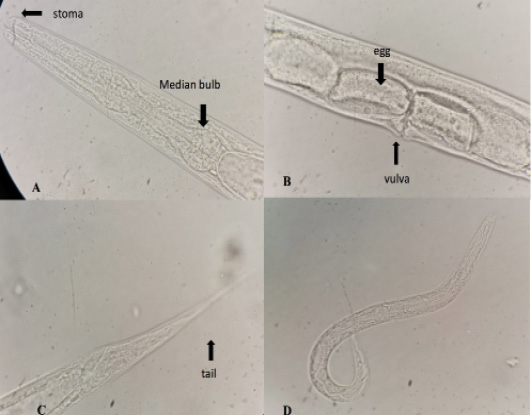First Record of Caenorhabditis briggsae (Nematoda: Rhabditidae) from the Giant African Land Snail, Lissachatina fulica (Gastropoda: Achatinidae) in the Southern Philippines
First Record of Caenorhabditis briggsae (Nematoda: Rhabditidae) from the Giant African Land Snail, Lissachatina fulica (Gastropoda: Achatinidae) in the Southern Philippines
Michelle Anne Diano1,2, Loel Dalan1,2, Neil Pep Dave Sumaya3 and Nanette Hope Sumaya1,2*
Photomicrograph of Caenorhabditis briggsae hermaphrodite isolated from Lissachatina fulica from Bukidnon, Philippines. A: anterior region showing stoma and median bulb (arrows); B: lateral view showing vulva and egg (arrows); C: posterior region showing female tail and anus (arrows); and D: juvenile.
Phylogenetic tree as inferred from the Bayesian inference analysis between four Caenorhabditis briggsae strains and other closely related strains are provided based on the D2-D3 fragment of 28S rDNA region. Bayesian phylogenetic analysis was carried out using the GTR + I + G nucleotide substitution model; analyses were run under 1 × 106 generations (4 runs).







